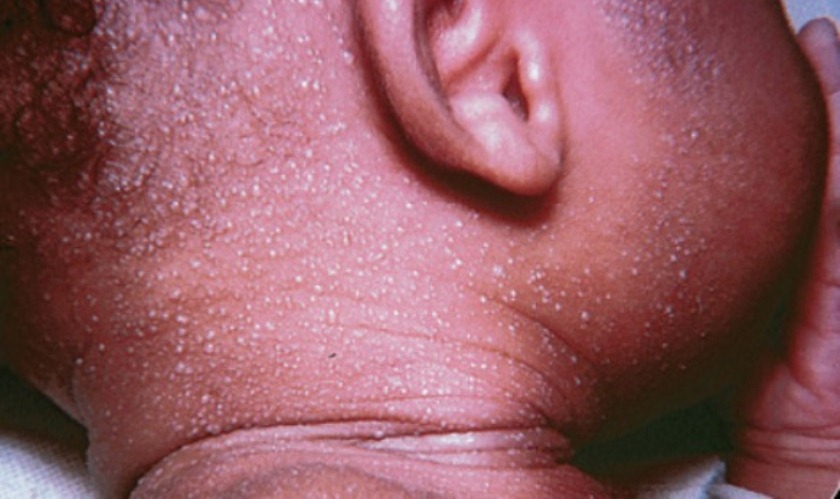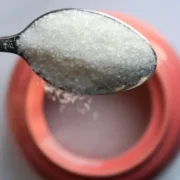Common Baby Skin Problems & What to Do

Chiomah Momah
‘As smooth as a baby’s bottom’ is a common phrase which alludes to the supple and smooth nature of a baby’s skin. However, it’s common for babies to experience various skin conditions as they grow. Below are some of the most common ones and how to get baby’s skin look as smooth as the day they were born!
1. Cradle Cap: This is a very common dandruff like condition that affects the babies scalp and in most cases, clears on its own. Usually, it starts with dry scaly skin that peels off. In some bad cases, it causes bald patches on the baby’s head. Cradle cap could be mild, lasting just a week or two, or last as long as three months! An easy remedy is to wash baby’s scalp with normal baby shampoo and then apply generous amounts of baby oil or any other natural oil such as coconut or olive oil. Once the oil sits for a few minutes, comb baby hair and watch the scales fall off. If the cradle cap seems severe, consult your paediatrician.
2. Baby Acne: This is also known as Neonatal acne, but don’t let the name fool you; though baby acne is caused by the same hormones that cause acne in teenagers, it’s not as stubborn. Baby acne doesn’t need treatment and it will eventually disappear on its own. If it persists for more than a few weeks, then it’s safe to see your paediatrician.
3. Heat Rash: This is one of the most common skin conditions, especially in the tropics. Medical experts suspect that it is caused by blocked sweat glands. The easiest way to treat heat rash is to dress baby coolly, not in layers upon layers of clothing on a very hot day. Also ensure your baby’s room is well ventilated.
READ ALSO: Mum Shares Baby’s Miraculous Recovery After Long-term Struggle With Chronic Skin Disease
4. Diaper Rash: Diaper rash also called nappy rash is usually caused by prolonged contact with wet and soiled diaper. The easiest and safest way to treat diaper rash is by keeping baby dry, this can be achieved by changing diapers timely! Sometimes, try to air your baby’s bottom for a few minutes under supervision. If airing your baby’s bottom isn’t working, then try using any over the counter diaper rash treatment that contains zinc oxide. Treatments like Sudocrem or Desitin may help bring swift healing to your baby’s delicate bottom.
5. Yeast Infection: This usually occurs when a diaper rash isn’t treated properly. A typical sign of a yeast infection is that the rashes in the diaper region are more widespread and persistent. In some cases, yeast infections occur after the baby has been treated with antibiotics. If you suspect your baby’s diaper rash is a yeast infection, see your paediatrician for a prescription.
6. Eythema Toxicum: This is another common skin condition in infants that usually manifests as small rashes all over the body. However, like baby acne, it usually clears off on its own.
7. Eela: This should not be confused with ringworm or eczema which is Ifo in Yoruba. Eela usually affects the scalp and some parts of the body. In some parts of Nigeria, it is treated with a local mixture made from Hibiscus leaves (agbo). However, it is best to see your baby’s pediatrician for a proper diagnosis and prescription.
There are many other skin conditions that affect babies, while some are usually harmless and short-lived, others may escalate if not properly handled. Note that in some cases, a little fresh air and proper hygiene will clear them in no time. As always, when in doubt, always see your baby’s paediatrician.



My daughter has a very sensitive skin and diaper rash was always a daily occurrence. Thanks for this information MIM.
Thanks for sharing MIM.
Thanks for this.
Thanks for sharing
Thanks MIM.
Tnkx MIM for sharing
Noted
Inspired
Tnx 4 sharing
Noted, thanks MIM.
Noted
I’ve experienced most of these that I’m now an expert at treating them(from experience)
Thanks for this info
Thanks this is very helpful
Thanks MIM
tnx mim
Thanks for sharing
Thanks MIM
thanks MIM
Very educative. .thanks for sharing MIM.
My daughter has a very sensitive skin and diaper rash was always a daily occurrence. Thanks for this information MIM.